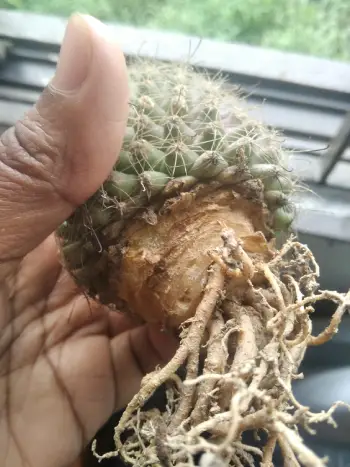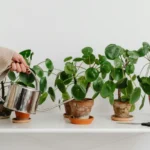LET"s Talk: info@greenaryleaf.com
Houseplant brings life, beauty and freshness to any space. Caring them isn’t always simple as it seems. We may frustrated facing common issue of houseplant most often. So every plant lover like us should be concern about those common indoor plant problem to overcome their frustration at the beginning of plant journey. Here we will discuss some common houseplant problem which we often faces and try to find out the why those problem occur and find out the most possible solutions of it. Are you ready?
Yellowing leaves
Old Plant leaves turn yellow and it is a natural process. The problem plant lovers faces mosty is their plants leaf turning yellow. But don’t panic. It is a common houseplant problem. Its usually a signal of overwatering, underwatering or plant need more light.
How to fix
Watering habit: Perfect watering is most important for keeping houseplant young and vibrant. Ensure the soil isn’t soggy or bone-dry. Only water when you notice the top surface of the soil is dry.
Evaluate light exposure: Move your plant closer to a light source if it’s in low light or provide indirect sunlight for plants that can’t handle direct exposure.
Trim yellow leaves: Remove affected leaves to encourage healthy growth.
Nutrient Deficiency: Sometimes we often show the leaf become yellow but the veins remain green. In this case that might be nitrogen deficiency. Do fertilize in more balance way.
Stretched Growth
We often see houseplants growing in a stretching way. They are trying to reaching towards the light source by curving the veins. But this issue isn’t a big deal.

How to fix
Keep the plant closer to light source and rotate them regularly. If you can’t find suitable location you may use fluorescent bulb to protect your plant.
A good way to live by with LED or HCL lights is to watch your plants for any indication they are bending or Leaning in any direction but straight up.
Extreme temperatures, particularly heat, can stress plants, causing them to stretch. Keep plants in a stable, suitable environment.
Brown leaf
Brown tips is the most common houseplant problem. It often a sign of stress, and the most common culprits are low humidity, underwatering, or a buildup of salts from fertilizers.

How to fix
Increase Humidity: Indoor air can be dry, especially in the winter. Place a humidifier near your plant or mist the leaves regularly.
Watering: Ensure you’re watering consistently. If your plant has been sitting in dry soil for too long, it may struggle to recover.
Flush Salt Buildup: Flush out salts by watering thoroughly and allowing excess water to drain.
Pruning: Trim off the brown tips to prevent further damage and keep the plant looking healthy. Be sure to use clean scissors to avoid introducing any diseases.
Leaf Drop
Dropping leaves can indicate stress from various factors such as temperature fluctuations, light changes, pests, or improper watering.

How to fix
Check Light Conditions: Ensure your plant is receiving the right amount of light. Too much or too little light can cause leaf drop.
Maintain Consistent Temperature: Keep plants away from drafts or heat sources, as sudden changes in temperature can shock them.
Inspect for Pests: If the problem is severe, check signs of pests like aphids, mealybugs which can cause leaf drop.
Mulching: Applying mulch around the base of trees helps retain moisture and regulate temperature, preventing stress that could lead to early leaf drop.
Always clean dropped leaves from your pot.
Wilting
Wilting usually happens due to either overwatering or underwatering. It can also occur when the plant is not receiving enough sunlight or when the roots are confined in a small pot.

How to fix
Check Watering Schedule: If the soil feels soggy, reduce watering. If it’s dry, give it a deep drink of water.
Increase Light Exposure: If your plant is wilting, check if it’s getting enough indirect sunlight.
Root-bound: If your plant is root-bound, repot it into a larger container to give the roots more space to grow.
Ensure pots have drainage holes to avoid waterlogging, which can suffocate roots and lead to wilting. Good drainage is key to preventing root rot and other issues.
Pest Infestations
Pests such as spider mites, aphids, or mealybugs can quickly turn a healthy plant into a sad one. These pests are often introduced when new plants are brought into the home or from poor environmental conditions.

How to fix
Inspect Regularly: Check your plants for pests weekly. Look at the undersides of leaves and the stems.
Use Natural Remedies: Insecticidal soap or neem oil are excellent natural pest control solutions. Apply them to the affected areas.
Quarantine New Plants: Always isolate new plants for a few weeks before introducing them to prevent pest spread.
Keep the area around your plants tidy. Remove fallen leaves and debris, as these can harbor pests. Clean pots and trays regularly to eliminate any hiding places.
Root Rot
Root rot occurs when plants are overwatered or the soil doesn’t drain well. The roots begin to suffocate, causing the plant to wilt, turn yellow, and eventually die.

How to fix
Check Drainage: Ensure the pot has adequate drainage holes.
Re-pot: Remove the plant from its pot, trim off the rotting roots, and repot in fresh, well-draining soil.
Watering Habits: Water only when the top inch of the soil is dry.
High Humidity: Root rot can also result from high humidity or low temperatures. Avoid placing plants in cold, damp conditions, and ensure they are kept in a warm environment with proper airflow.
Mold or Mildew on the Soil
Mold or mildew growth usually indicates overwatering and poor air circulation, which creates the perfect conditions for fungus to thrive.

How to fix
Improve Drainage: Ensure the pot has good drainage, and only water when the soil feels dry.
Remove Mold: Gently scrape off the moldy surface layer of the soil and replace it with fresh soil. If the problem persists, try using a fungicide.
Use Fungicide: If mold or mildew starts to form, treat the soil with an organic fungicide, such as neem oil or a solution of baking soda and water, to kill off fungal spores. Always try to make best soil for indoor plant.
Last Word
Indoor plants can face a variety of challenges, the key to successful plant care lies in proactive management and understanding your plant’s specific needs. By recognizing the early signs of trouble and making simple adjustments you can keep your plants healthy and vibrant.
Remember, every plant has its quirks, but with the right attention and a little patience, you can easily overcome common problems and enjoy a flourishing indoor garden. With these tips in hand, you’re ready to tackle any indoor plant issue that comes your way—and keep your green space thriving for years to come.




